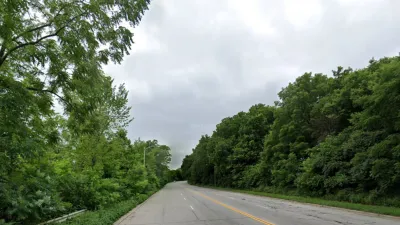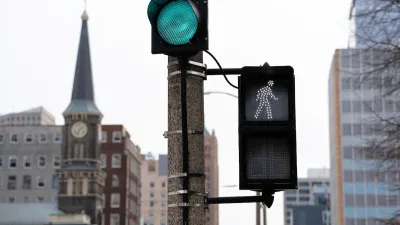Many people know Milwaukee as the Algonquin translation for “The Good Land.” But unfortunate changes in the water table underneath the city now make Milwaukee the sinking city. Experts disagree why.
Michael Horne details the ongoing trouble in Milwaukee to save buildings and streets that are sinking due to the retreating size of the water table underneath the city.
“The problem begins with Milwaukee’s marshy base: it was built on marshland that bordered its three rivers. The entire Third Ward and nearly three-fourths of Downtown stands on a swamp. Although it was filled in with dirt and garbage and the like, underneath it, water still flowed.”
“Most of the substantial buildings in old Milwaukee (some erected as late as the 1940s) were constructed on foundations of wooden pilings pounded into the earth, often by Edward E. Gillen Co. The pilings would extend through the filled-in dirt into the ample water table about 10 feet beneath grade and then into the swampy soil found beneath that. The pilings were expected to remain submerged and be sound for centuries.”
But as the water table has retreated, the pilings of many buildings in Old Milwaukee have been exposed to the air and decay. According to Horne, “the technical term is ‘pile rot.’”
“The latest casualty is the 1904 structure at 734 N. 4th St., with an assessed value of nearly $1.7 million”
Some blame the Deep Tunnel (a 28.5-mile sewage and stormwater tunnel that runs 135-300 feet below the city) for the problem. “The Deep Tunnel is divided into three sections that extend from Downtown, giving this part of the city great exposure to its effect on the groundwater. The tunnel is so porous that huge amounts of water from the old marsh are seeping into it each day, lowering the water table and exposing the old buildings’ supportive timbers to pile rot,” writes Horne.
The Milwaukee Metropolitan Sewerage District argues that downtown Milwaukee has been overloaded with too many buildings, with uncapped, underground wells causing the problem.
FULL STORY: The Sadly Sinking City

Planetizen Federal Action Tracker
A weekly monitor of how Trump’s orders and actions are impacting planners and planning in America.

Maui's Vacation Rental Debate Turns Ugly
Verbal attacks, misinformation campaigns and fistfights plague a high-stakes debate to convert thousands of vacation rentals into long-term housing.

Restaurant Patios Were a Pandemic Win — Why Were They so Hard to Keep?
Social distancing requirements and changes in travel patterns prompted cities to pilot new uses for street and sidewalk space. Then it got complicated.

In California Battle of Housing vs. Environment, Housing Just Won
A new state law significantly limits the power of CEQA, an environmental review law that served as a powerful tool for blocking new development.

Boulder Eliminates Parking Minimums Citywide
Officials estimate the cost of building a single underground parking space at up to $100,000.

Orange County, Florida Adopts Largest US “Sprawl Repair” Code
The ‘Orange Code’ seeks to rectify decades of sprawl-inducing, car-oriented development.
Urban Design for Planners 1: Software Tools
This six-course series explores essential urban design concepts using open source software and equips planners with the tools they need to participate fully in the urban design process.
Planning for Universal Design
Learn the tools for implementing Universal Design in planning regulations.
Heyer Gruel & Associates PA
JM Goldson LLC
Custer County Colorado
City of Camden Redevelopment Agency
City of Astoria
Transportation Research & Education Center (TREC) at Portland State University
Jefferson Parish Government
Camden Redevelopment Agency
City of Claremont





























